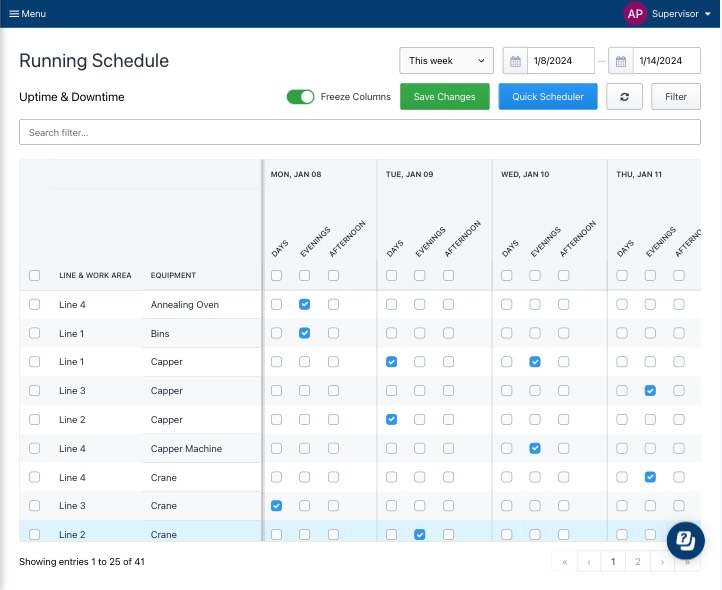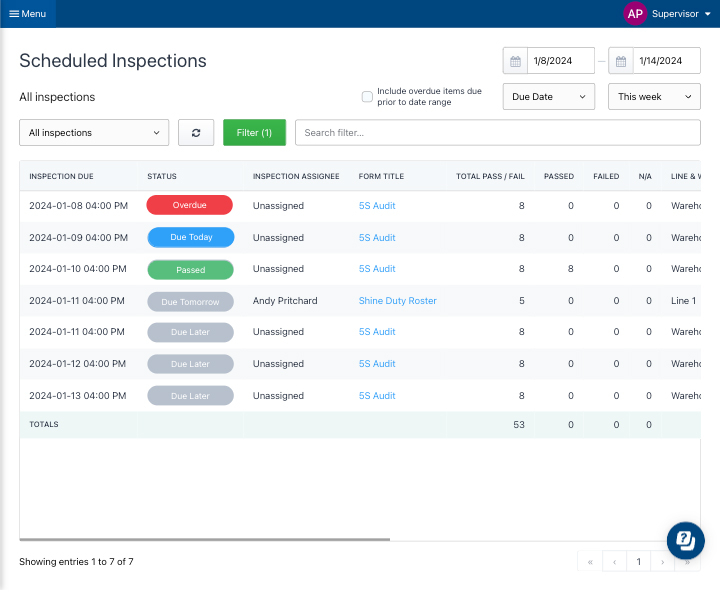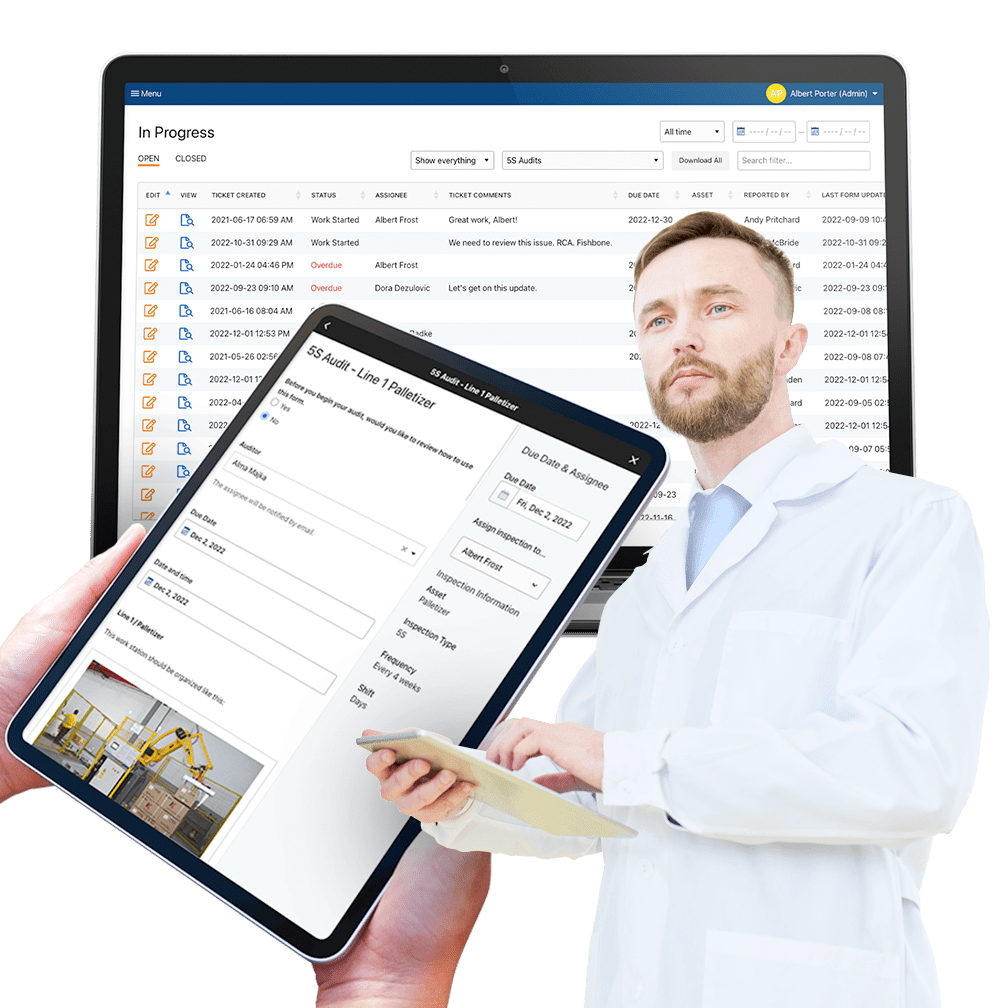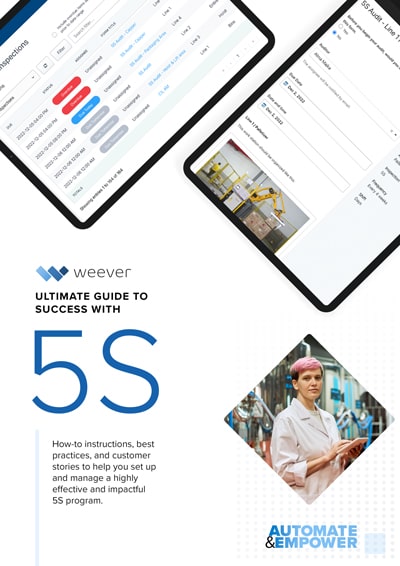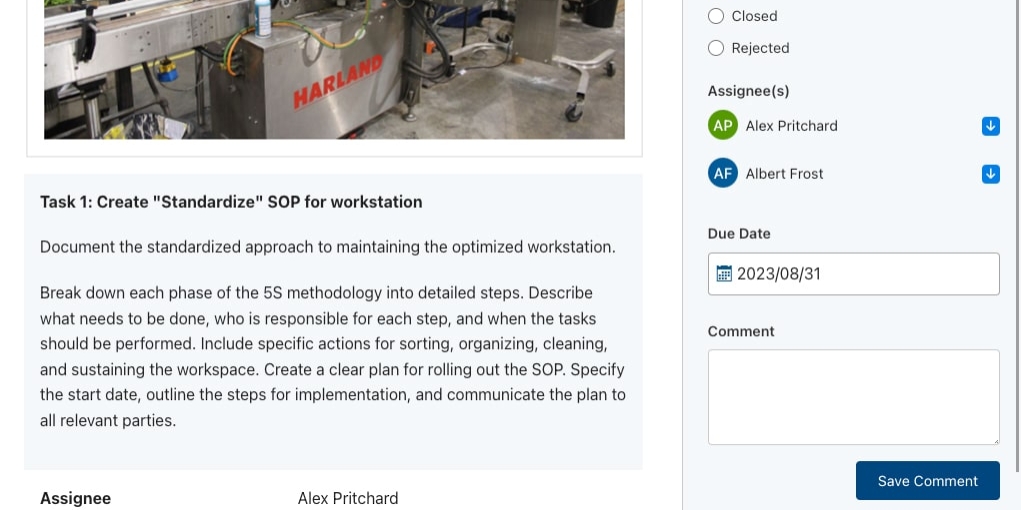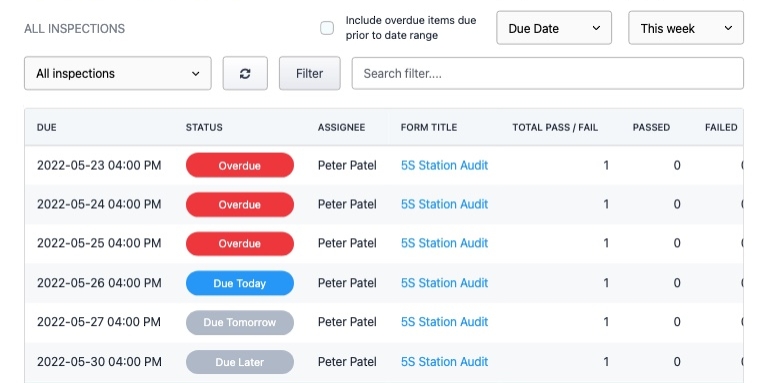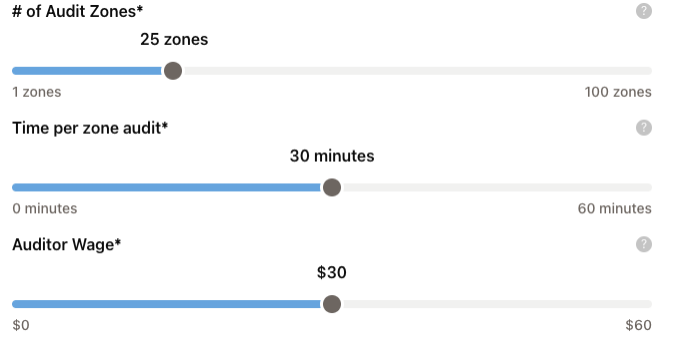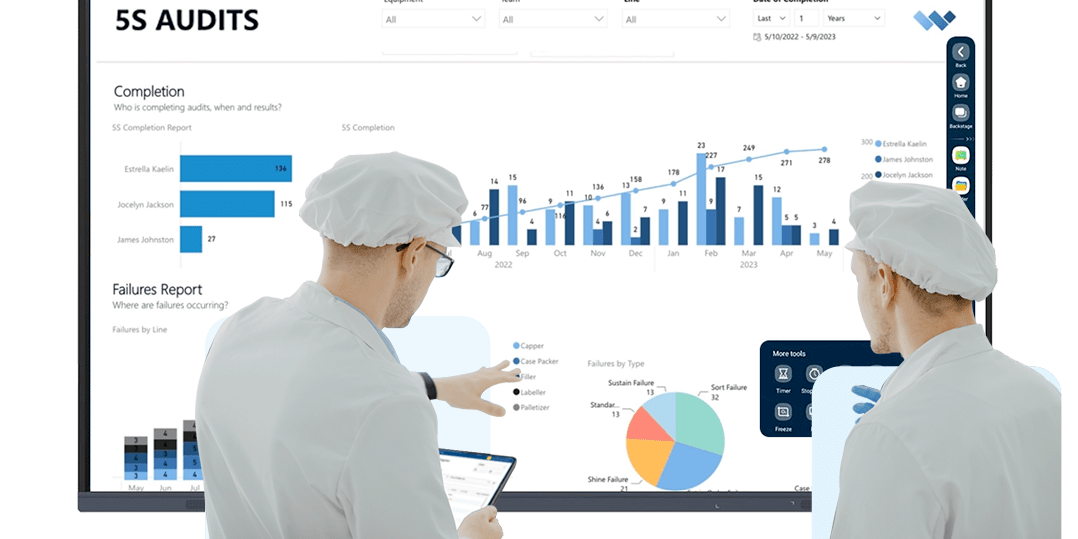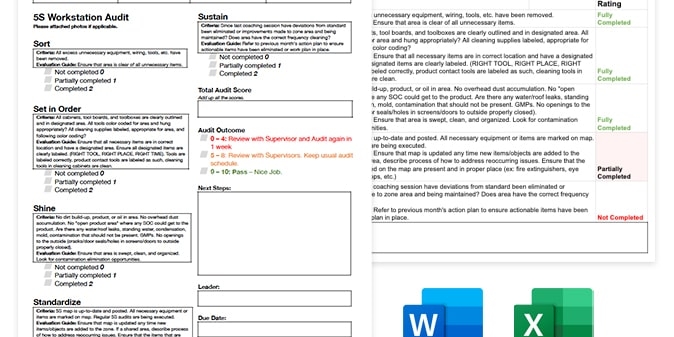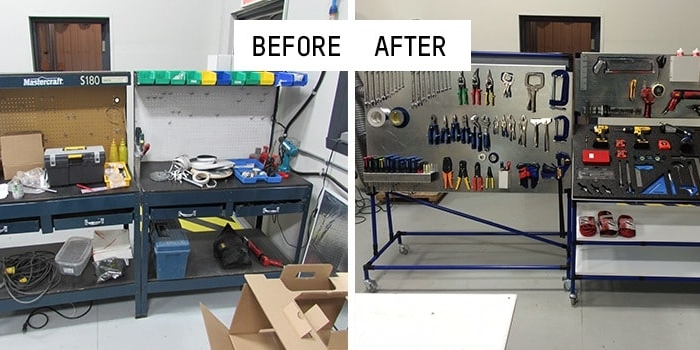The Art and Science of Scheduling 5S Audits
Step-by-step guide to scheduling 5S audits to foster a culture of continuous improvement and ensures regular and systematic evaluation of workstations.
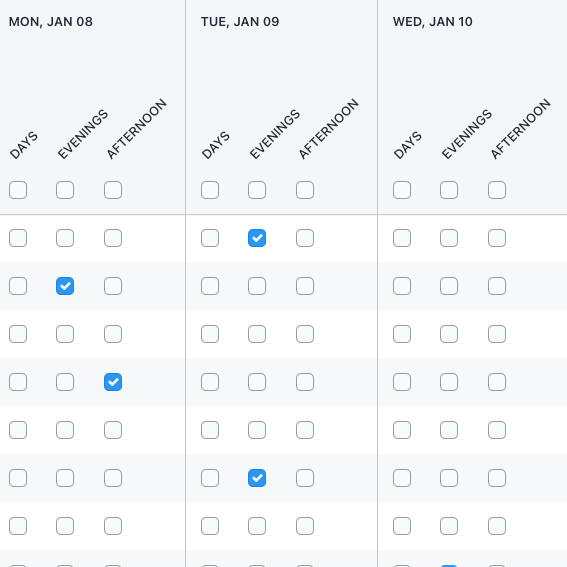
5S Overview
5S Planning
5S Implementation
5S Auditing
5S Audit Digitization
FREE RESOURCEs
The 5S methodology is a powerful framework for workstation optimization and continuous improvement. At its core lies the practice of auditing—a systematic evaluation that ensures adherence to 5S principles.
Scheduling these audits strategically is a cornerstone of maintaining a thriving 5S program. Let's delve into the essence of 5S auditing and unveil the pivotal role that scheduling plays in its success.
What is 5S Auditing?
5S auditing is a systematic assessment that scrutinizes workspaces to gauge their alignment with the principles of Sort, Set in Order, Shine, Standardize, and Sustain.
These audits serve as a critical tool to evaluate the effectiveness of 5S implementation, identify areas for improvement, and reinforce a culture of cleanliness, organization, and efficiency within workplaces.
Interested in learning more about Weever?
Steps-by-Step Guide to Scheduling 5S Audits
The success of 5S auditing hinges not just on the evaluation itself but also on the strategic scheduling of these assessments. Regular, well-planned audits foster a culture of continuous improvement and drive sustained excellence within organizations.
Before scheduling audits, it is recommended to:
After scheduling audits, you can move forward with:
- Conduct Audit
- Generate & Review Reports
- Implement Corrective Actions & Follow up Audits
- Celebrate Success and Recognition
1. Define Audit Frequency
- Understand Organizational Needs: Consider operational requirements and the nature of work areas to determine how frequently audits should occur.
- Set a Schedule: Establish a clear audit frequency, whether it's weekly, monthly, quarterly, or based on specific operational cycles.
2. Identify Areas for Audits
- Prioritize Work Areas: Determine which departments, zones, or processes require immediate or regular audits based on their impact and criticality.
- Rotation Schedule: Develop a rotation schedule to ensure all areas are audited consistently over time.
3. Establish Audit Duration and Timing
- Allocate Time: Determine the estimated time required to conduct audits for each designated area.
- Choose Appropriate Timing: Schedule audits during times that least disrupt operations but allow for thorough evaluations.
4. Communicate Audit Schedule
- Allow Flexibility: Be open to adjusting audit schedules based on unforeseen circumstances or emerging priorities.
- Adapt to Changes: Modify schedules if feedback or data indicates the need for more frequent or less frequent audits in certain areas.
5. Utilize Technology and Tools
- Use Scheduling Software: Employ digital tools or software that streamline the scheduling process and allow for easy tracking and management of audit schedules.
- Set Reminders and Alerts: Utilize reminders and alerts to ensure auditors and stakeholders are informed and prepared for upcoming audits.
Read our Ultimate Guide for 5S Auditing
5S Scheduling Best Practices
The most important factor for success is to make the auditing program as accessible as possible. To maximize audit accessibility the tools and resources required should be easy to access and use. Also, the audit schedule should be consistent.
Scheduling 5S audits in a systematic and consistent manner ensures that the workspace's adherence to 5S principles is regularly assessed, providing opportunities for improvement and sustaining the desired standards over time.
Decide on the frequency of audits based on the nature of the workspace, its size, complexity, and the organization's needs. Audits can occur daily, weekly, monthly, quarterly, or even semi-annually.
Some best practices for setting up 5S audit schedules include:
Set a Consistent and Clear Schedule
Establish a clear schedule detailing when audits will occur and which areas or departments will be audited at each session. Regular audits maintain a continuous focus on maintaining standards and identifying areas for improvement. This schedule should be communicated and adhered to by audit teams.
Flexibility and Adaptability
Be open to adjusting the audit schedule if necessary due to unforeseen circumstances, changes in priorities, or emerging needs within the organization.
Feedback and Improvement
Gather feedback from auditors and stakeholders regarding the audit schedule's effectiveness. Use this feedback to refine and improve the scheduling process for future audits.
Continuous Review
Periodically review the effectiveness of the audit schedule. Ensure it aligns with the organization's goals, and make adjustments as needed to enhance its efficiency and relevance.
Documentation and Records
Keep records of scheduled audits, including dates, areas audited, auditors involved, and findings. Documentation aids in tracking progress over time and identifying trends.
Rotating Audit Teams
Consider rotating audit teams or assigning different auditors for each session. This helps gain fresh perspectives and prevents bias in assessments.
Continue Learning about 5S

bandjlogo

Bell-logo-New

Canadian-Tire-Logo

Diageo-customer-logo

greyston-bakery-logo

hello-fresh-customer

marks-customer-logo

CSL_Limited_logo

monin-logo

Winland Food

Mars-logo-main

rise-baking-customer-logo

Rockwool-Customer-Logo-min

Sportcheck-customer-logo

unilever-customer-logo

walmart-logo-small

husqvarna-customer-logo

Ajinomoto_logo

Peet's_Coffee_logo

Royal-Canin-Logo

